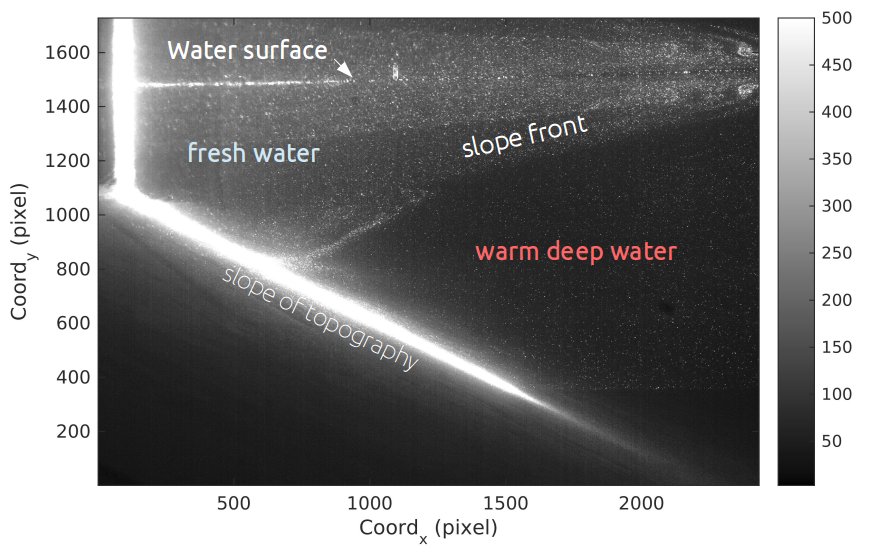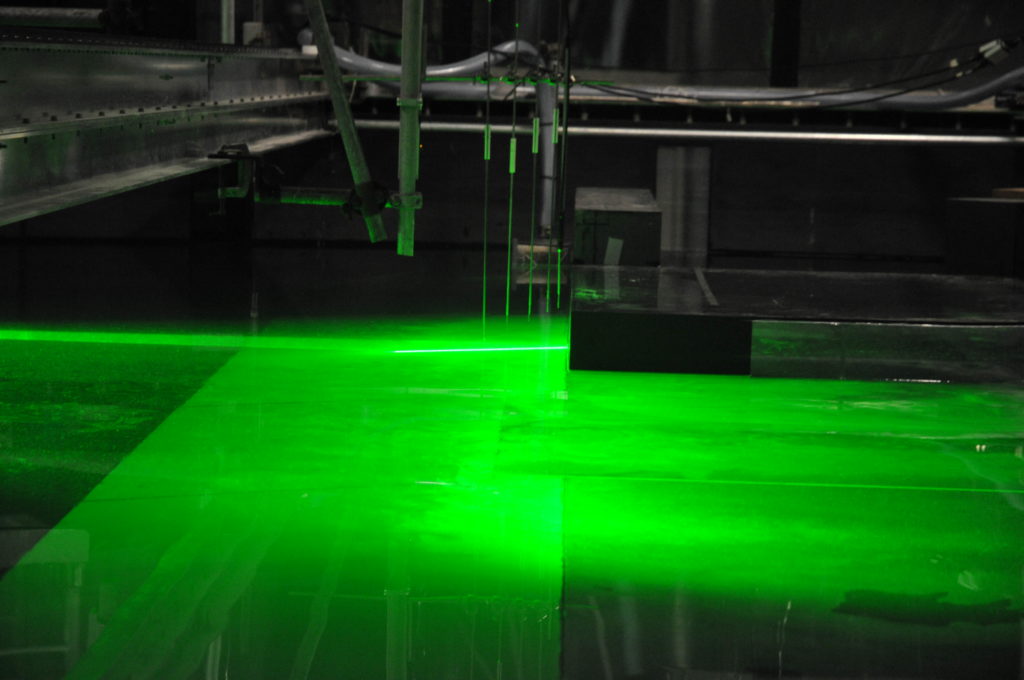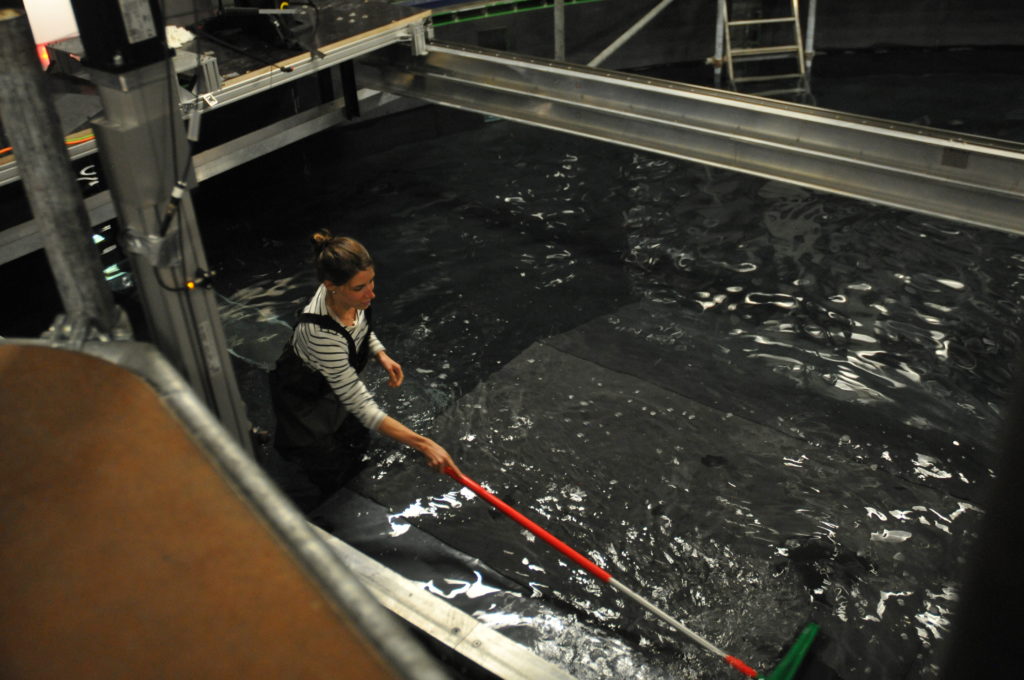Today, we finally started some experiments that got us a bit closer to reality. The water in the tank is now salty, just like the Southern Ocean and the inflow is fresh, which produces a slope front. Remember, the slope front separates the warm deep water from the fresh shelf water influenced by the ice shelfs. The slope front makes it difficult for the warm deep water to get onto the continental shelf. We already wrote more about the ‘Antarctic Slope Front’ in a previous post (https://elindarelius.no/2017/09/19/a-bit-more-about-real-antarctica/).
On a photo of the camera of a cross section through the current you can actually nicely see this slope front!

To actually measure the change in density with depth, we attached 5 probes just above the current that do profiles of the water column. They measure the conductivity and temperature, from which we calculate the density. So, it is exactly the same as CTDs (conductivity – temperature – depth) that we use on the ship in Antarctica—just in miniature.

After a while, the fresh water spreads out at the surface and forms a surface layer. When the laser crosses the interface between this surface layer and the salty subsurface layer it gets deflected, which we want to avoid. Therefor we were allowed to go into the tank and mix the water 🙂


2 thoughts on “Adding salt to spice it up”
Comments are closed.